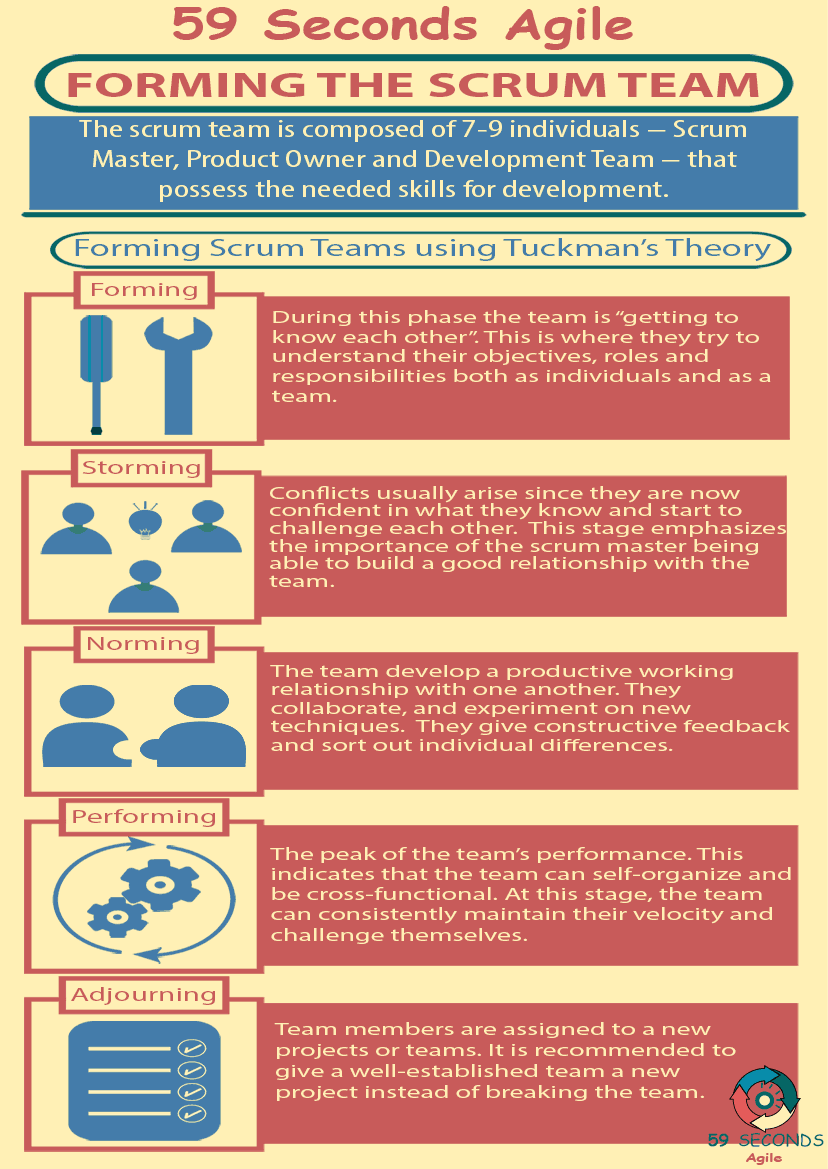
Forming the Scrum Team for Scrum Masters
Scrum is a framework that encourages delivery of potentially shippable product increments every 2-6 weeks. The work is developed and delivered by the scrum team which is composed of a product owner, scrum master, and development team. In traditional project management or waterfall, the development phases – requirements analysis, coding, testing, and deployment – are done sequentially. Each development phase corresponds to a specific role. Business requirements come from business analysts and product owners; coding is done by developers; testing is executed by software testers, and deployment is made possible by release management professionals.
Traditionally, as all these steps are done in phases, the people working on each phase are people of the same role. For example, during development, all developers work together; during testing, testers interact with fellow testers. Once the code has been turned over, there is no actual interaction between testers and the developers. It is understood that since the phase has ended, the responsibility is handed over as well. In Agile Scrum, all phases are done in one sprint (which spans from 1-6 weeks). This means that all of the significant roles in delivering a potentially shippable product increment are brought together in one team called a scrum team. The scrum team is composed of 6-10 individuals – programmers, testers, business analysts, scrum master and a product owner – that possess the needed skills for development.

Roles
The Product Owner is the representative of the business to the team. He maintains the product backlog, the repository of the work needed to be done. He priorities this list according to business value and ranks the items in order of priority. The product owner makes the decisions about the product and ensures that it meets the business needs.
Roles
The development team is individuals that ensure that the vision presented by the product owner is made into a tangible product. These are the software developers, testers, and business analysts.
Unlike in waterfall where each role does not interact as often as possible in each software development phase, in Agile, it is critical that each of these roles coordinate often. These roles are now functioning as one team with the goal to deliver a potentially shippable product increment each sprint with high quality. It is the responsibility of the Scrum Master to ensure that this team will be able to self-organize – to deliver under minimum supervision – and be cross-functional – for each team member to grow, acquire and use skills as the team needs it to deliver their sprint goal. The Scrum Master is considered as the guardian of Agile and Scrum values, principles and practices. He acts as a teacher, coach and servant leader of the team. He ensures that the committed work is delivered within the sprint. He facilitates the scrum meetings and builds the culture of transparency and collaboration in the scrum team. The Scrum Master guides the team as they undergo Bruce Tuckman’s “forming, storming, norming, performing, norming and adjourning” stages.
Our Favourite Agile Books
We found these books great for finding out more information on Agile Scrum:
Forming Scrum Teams using Tuckman’s Theory
Forming
This is where the team members are brought together and informed that they will be working as a team. During this stage, everyone is still in the “getting to know each other” phase. This is where they try to understand their objectives, roles, and responsibilities both as individuals and as a team.

